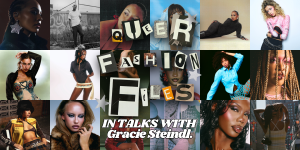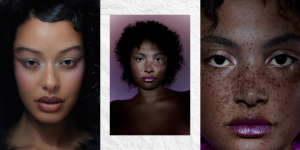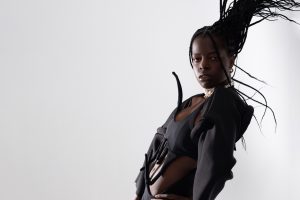Queer Fashion Files: Interview with fashionista Joely Malcolm
By: Hailey Moroney

Welcome to Archer’s Queer Fashion Files! Each month, we’ll interview trendsetters and tastemakers, showcasing the diversity and talent of the fashion world. You can check out all episodes of our Queer Fashion Files here.
In Episode 16, Hailey Moroney chats to Joely Malcolm, a content creator and university lecturer based in Sydney.
Hailey Moroney: Hi Joely! I quickly became obsessed with you once I stumbled across your content online and couldn’t wait to interview you! Can you tell our readers about yourself?
Joely Malcolm: Hi Hailey! Thank you so much, that’s so kind! I’m a fashion content creator focusing mainly on small business, secondhand clothing, sustainability and re-wearing your clothes (you’d think everyone would do this, but Australia produces so much textile waste each year!).
I’ve been doing content creation for over two years now. I’ve had such amazing opportunities, like attending London Fashion Week and Copenhagen Fashion Week, but what I love the most has been finding the online community I dreamed of growing up!
My other job – and arguably the cooler one – is as a lecturer at a fashion university here in Sydney! I teach units around fashion marketing, and I genuinely couldn’t be happier. I really feel like I’m helping mould the next generation of fashion talent, which I’m honoured to be doing!
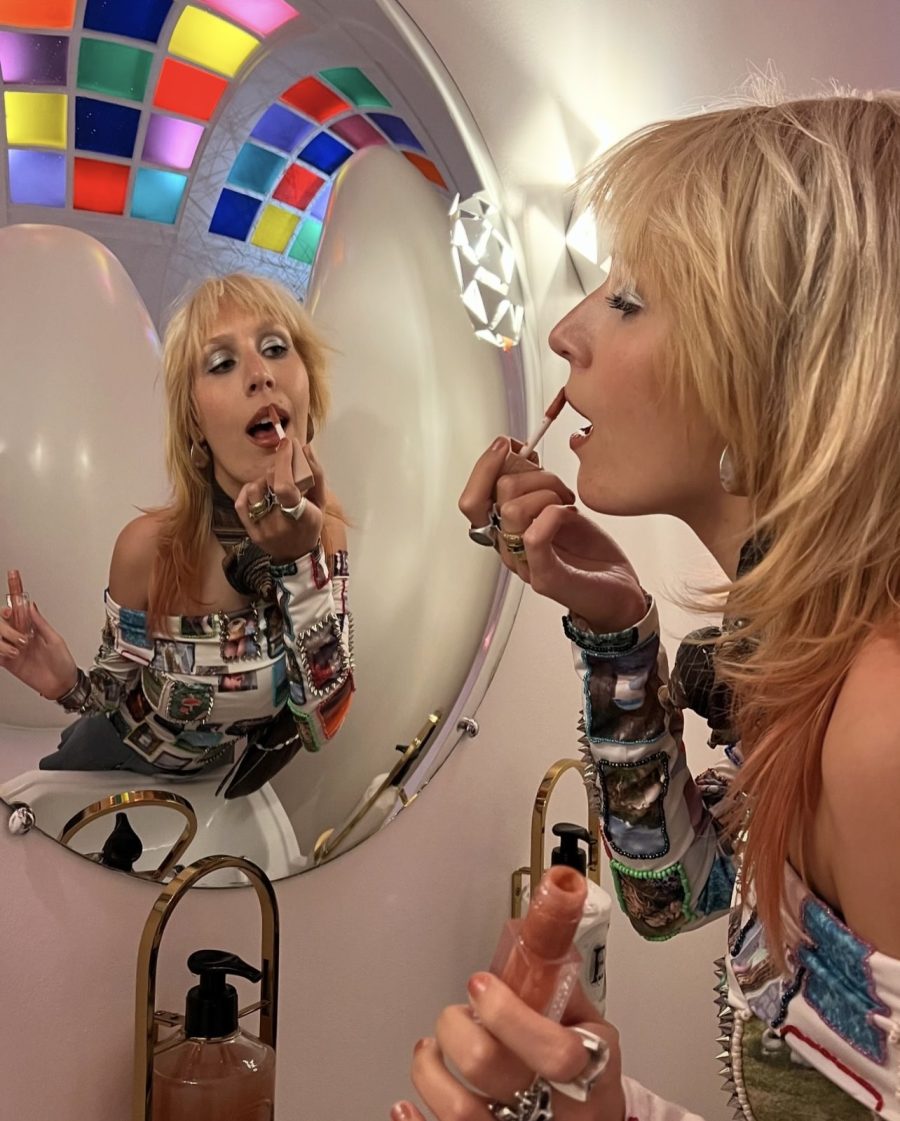
HM: I love how you use your platform to further change in the industry – sustainability, size diversity, inclusivity and more. Can you speak to how this informs your teaching style?
JM: Thank you! I always want to make sure everyone feels included, and also understand the implications of their shopping habits, so I’m glad that isn’t going unnoticed. There are a lot of ways these factors affect my teaching style. I have the opportunity to shape the next generation of fashion creatives at the source, and I’m definitely taking advantage of that!
Whenever we speak about brands in class, I make sure to do my research and give my students all the information I’d want to know – is the brand sustainable, size inclusive, etc.? Do the brands they want to use in class work have controversies? I was shocked to find out how many fashion students didn’t know about the issues with Dolce & Gabbana.
I’m also teaching a generation where, sadly, fast fashion is the norm. If you think fashion school is immune from this, you’re kidding yourself. At least once a week, I bring up the implications of fast fashion on the planet, workers, small brands, and more. I like to think I am getting through to a lot of them.
I understand students don’t tend to have much spare money, but I want to show them that there are other ways to shop on a low budget that doesn’t have bad implications!
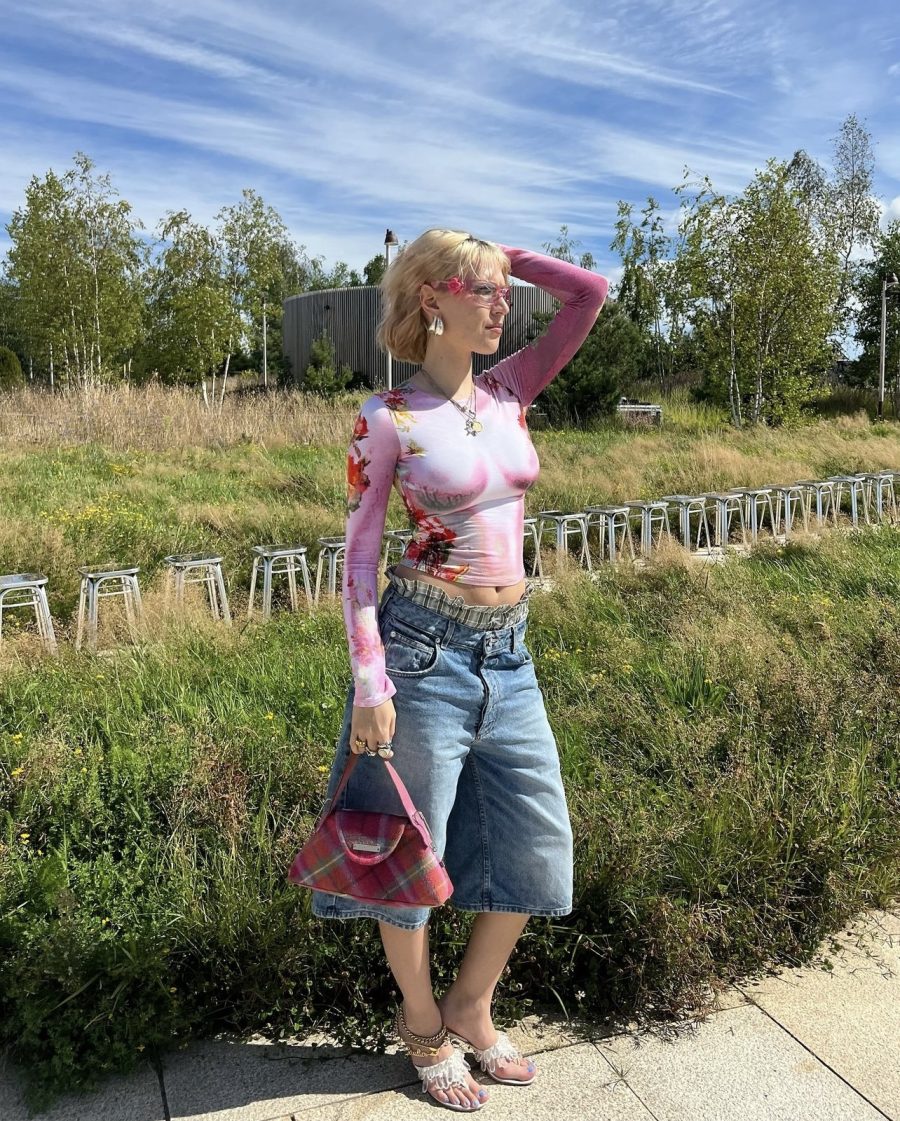
HM: You have a crazy following online! How do you navigate the challenges of having a large platform? Is it scary creating content you know is going to be seen by so many?
JM: I’m so grateful to have the community that I do. My audience is really respectful, both online and in person, and they’re eager to chat with me about anything. I’ve only had a few strange encounters, and even then, they have been pretty mild in comparison to others.
On the day-to-day, I don’t find posting or being online that scary – it’s only when my content finds the wrong audience. My friends and I have a joke that if a reel gets over 100,000 views, we have to turn the comments off.
I’ve had awful things said online, which have rocked my confidence and self-image, but I take the same approach to these comments that I do to bullies in real life. I remind myself that they are sad about their own lives and taking it out on me, and I shouldn’t take that on personally. Obviously, this is easier said than done – a recent instance almost took me offline entirely!
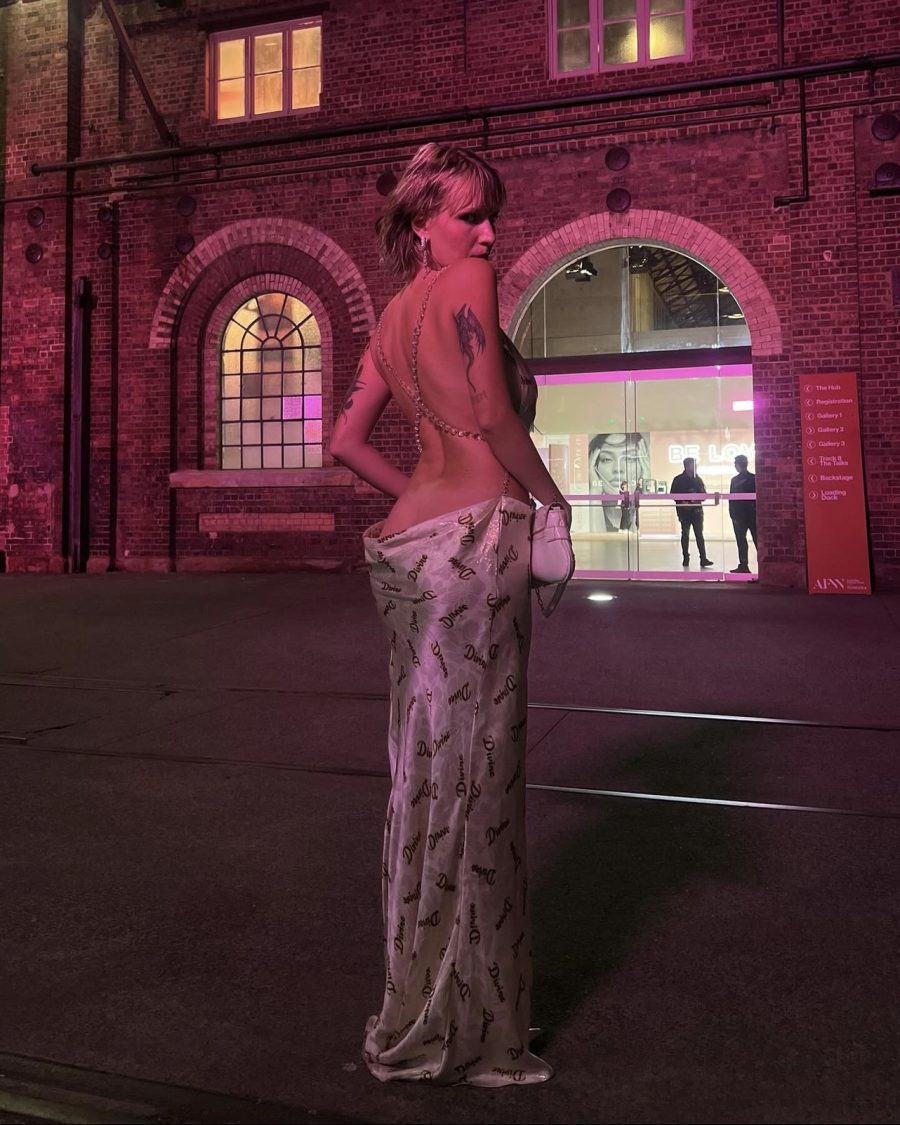
HM: How did you find yourself where you are today? What was your pipeline? Through the Queer Fashion Files, I always like to show our audience that there’s no right or wrong way to navigate this industry if you lead with inclusivity and kindness – so, how did you find your way through?
JM: I hope you’re sitting down, because this is a long one! I’ve been making outfits and posting them online before influencers and bloggers were even a thing (don’t EVER look up my mum’s Facebook albums!). I’ve always loved creating and fashion, so when Instagram came around, that’s what I would do. I got teased a lot for it, but I just kept doing me!
Over the years, I’ve been in and out of fashion school and retail assistant jobs. Once lockdown struck in 2020, I had nothing to do, so I downloaded TikTok. I started posting outfits and hauls as a way to pass the time and people started finding them! At that time, not many creators were really talking about personal style and smaller brands, so I stuck out like a sore thumb in the best way.
Through growing my skills online and having some fashion background, I landed THE job – a place on the digital team at Vogue Australia. I worked as the TikTok creator, which allowed me to meet incredible creatives in the industry, and make fun content on a much larger scale. There was a strong focus on inclusivity and sharing small Australian designers, which really opened my eyes to the world around me and how I could use this platform to do my part.
I owe my current career to my time at Vogue, and the team I worked alongside. I will be eternally grateful to them for putting their faith in an orange haired girl with no experience, but a strong vision!
A year later, I left Vogue and became a full-time content creator! I got to work with dream brands, put all my focus onto my content and do some incredible work that I couldn’t have made up even if I wanted to. However, content creation is a lonely job, and I felt myself withdrawing from my friends and family. Although I was pushing really hard and hitting big milestones in my work life, I was really struggling.
Around this time, my friend texted me about a job opportunity up at the school where he works – The Fashion Institute – and my name was the first to come up. I had always wanted to be a teacher, but I thought it was something that would happen when I was older, as I wasn’t formally trained yet. But this university has a focus on hiring people in the industry who are excelling in their fields, so formal qualification weren’t an issue.
I wasn’t sure what my teaching style would be like, or how students would react to me, but I’ve been blessed with the most amazing experience. I teach first-year students, so they’re eager to learn and happy to be there. I really am the luckiest teacher ever!
When it comes to landing a job in a creative field, the most important thing is putting yourself out there before anyone asks. Opportunities aren’t going to find you if you aren’t already creating. Your art doesn’t need to be good – believe me, my archived content is awful! – but it can still serve as great practise and a way to share your vision!
Go out to events, meet people that like what you like, and just have fun!
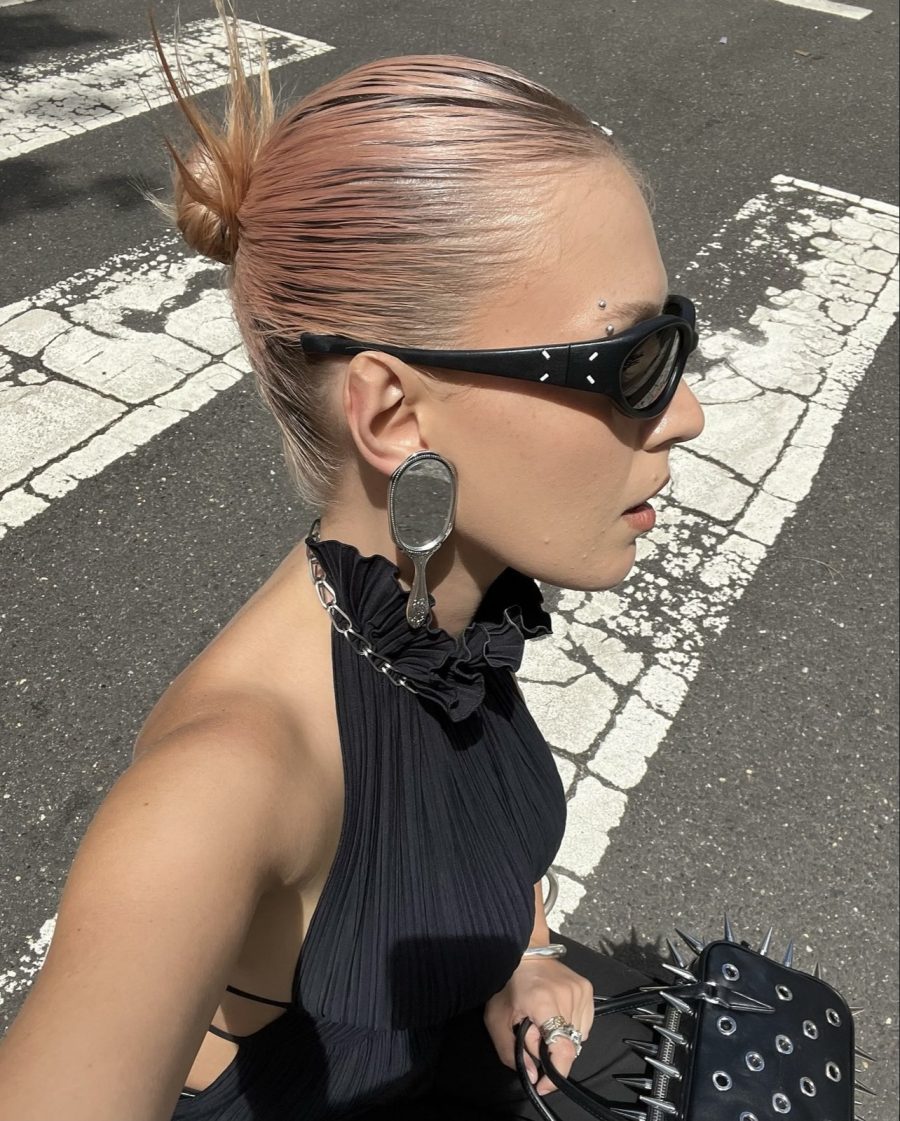
HM: As queer people, we’re often (rightfully) concerned that our personal identities will exclude or hinder us from landing opportunities or reaching our goals. But on the flip side, our identities can also inform our creative practice in exciting and unique ways. How have you found your personal identity to bring stronger values and direction in your work?
JM: My identity has changed drastically over the years, and I really feel like I am who I was always supposed to be. I pin this exact moment down to when I met Nina from Extra Silky Hair Salon. She saw something in a basic blonde girl, and brought my personality out through my hair. I’ve said this before, but I owe a lot of finding my personal and creative identity to her!
I’ve always had strong ideals about who I would and wouldn’t collaborate with, and I’ve stuck to them. Any brand that is disrespectful is not something I’d like to share with my audience. I think that’s why I’m successful: I won’t waver for a paycheck, and because of that, my audience trusts me. My personal values have essentially shaped the direction my creative work.
I only came out publicly at the start of this year, and as much as I’d like to say it’s been all sunshine and rainbows, there have been a lot of brands I used to work with not replying to my DMs since! With this happening, it’s really made me look at the brands that I work with, and decipher how they support communities they may not necessarily be a part of.
I’ve had some amazing (and awful) conversations with heads of brands to discuss how they can be better allies to a variety of communities. I’ve cut all ties with the ones who weren’t responsive to my feedback.

HM: Do you feel as though there are accessible avenues into the creative industry for folks from a working-class background? If not, what changes do you want to see to better support and empower working class creatives?
JM: I feel like I have to say yes because I grew up working-class and got to where I am now, but I feel very mixed about it.
I think that people from upper and middle classes will always, unfortunately, have the leg up. They can afford to buy the set-ups and products people are wanting to use at the moment, and to be in the room with creatives they may know through a friend of a friend. I definitely don’t think you need any of these things to be a strong and successful creative, but it helps.
I could go on forever about what we can do to support and empower working-class creatives, but I think the main issue lies with creatives who are already in the industry. Rather than hiring the same people to work on the majority of creative jobs, we should be doing our research and trying to discover new creatives who could use their foot in the door – like looking for talent at student shows, engaging with smaller creatives online that have a strong vision, and more.
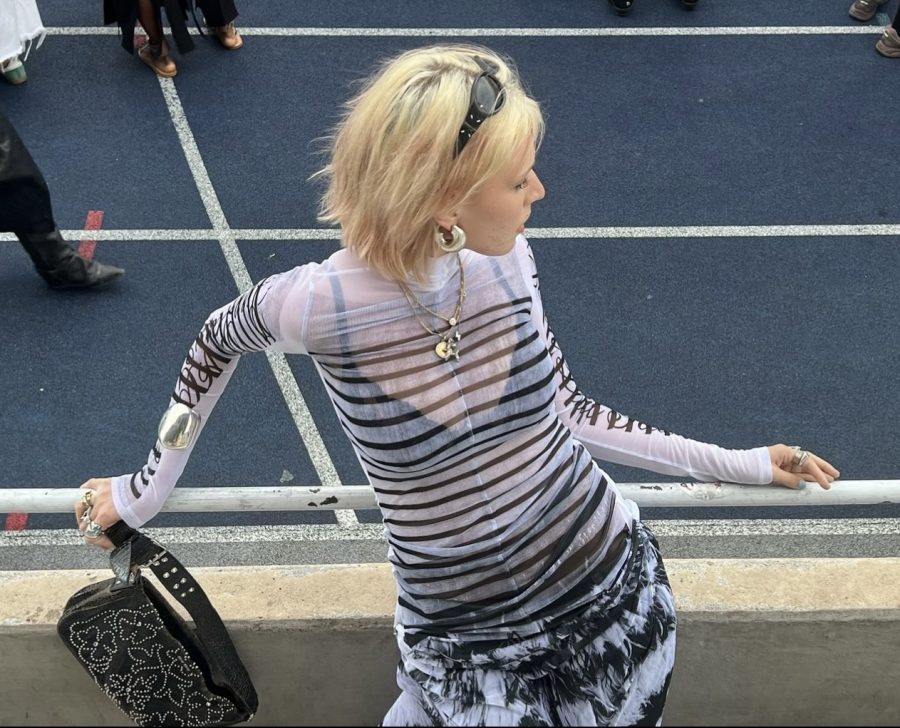
HM: How are you pursuing things that bring you creative joy in the future? What are you chasing next for yourself?
JM:I think the best way to find creative joy in the field you are pursuing is to do anything and everything outside of that field for inspiration! So, that’s what I’m doing at the moment!
I’m considering picking up instruments again, going to renaissance fairs, and getting out of my comfort zone. I’ve also started allocating ‘inspiration hour’ where I allow myself to deep dive into something for roughly an hour to get the creative juices flowing.
Social media either makes or breaks creativity, and I’m still working out where I stand with that. I’ve spent so many years making content for the sake of the algorithm that it’s started to deplete my creativity, so I think my next goal is to forgot about what does and doesn’t ’do well’ and just make content for myself!
I definitely want to expand into new creative paths, but I’m not quite sure what that looks like yet!
You can stay up to date with Joely Malcolm on Instagram.
If you want to pitch an idea for Archer’s Queer Fashion Files, email pitch@archermagazine.com.au with ‘QUEER FASHION FILES’ in the subject line. You can check out the rest of our Queer Fashion Files here.



